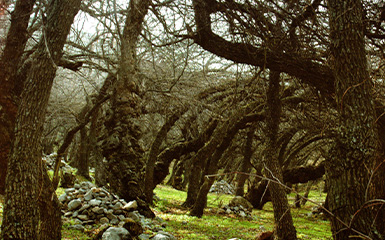Turkmenistan is one of the world’s best places for travelling and discovering new and amazing unique areas for the connoisseurs of natural diversity. The Caspian Sea, the huge, striking and mysterious Karakum Desert, subtropical abundance in the Sumbar Valley, the dangerous Amu Darya River, the picturesque foothills of the Kopetdag Mountains and the secret corners of the Badhyz State Nature Reserve with its unique flora and fauna are combined in the country. Stunning and grandeur waterfalls, the mountain rivers filling the silence with their murmur, beautiful gorges, underground lakes, fabulous caves, a plateau of dinosaurs and the burning gas crater in the centre of the desert or the ‘shining of the Karakum Desert’ in Darvaza captivate travellers.
The ancient Turkmen land is rich in the wild or cultivated plants and breeds of domestic animals. The ‘heavenly’ horses or the well-known Ahalteke horses, the Turkmen greyhound – tazy, the loyal companion of people – alabay, as well as grapes, pomegranates, and delicious Turkmen melons have enhanced the fame of Turkmenistan. Generously endowed by nature, this sunny land is rich in the endemic species of animals and plants.
There are 9 state nature reserves and 16 wildlife preserves on the territory of Turkmenistan. Obviously, the unique nature of the country and its desert and semi-desert biologic systems are extremely vulnerable and depend on human concern. The diversity of the local flora and fauna is unmatched in the entire subcontinent. Over 3000 plant species, about 50 fish species and 279 animal species, as well as over 3 million hectares of forests are under protection.


The protected areas include 17 natural monuments. A 2000-years-old juniper (in Turkmen ‘archa’), growing on the Kopetdag Mountains is among the most valuable species. In the only grove in the country, Unabi (the Koytendag Mountains), the trees are over 200 years old. A 500-year-old Shahoz (from Turkmen ‘king of the nuts) grows in the Aydere gorge near the city of Magtymguly (formerly Kara-Kala). A valuable walnut grove is located in the Ipaykala tract. In the Hojaburjibelend tract (the Koytendag Mountains), the Badhyz pistachio savannah has been preserved with centuries-old trees. About 1,700 species grow in the foothills of the Kopetdag Mountains, which is the largest plant variety in Central Asia. A representative of the desert flora, the valuable old black saxaul survived in the Yeradzhin wildlife preserve.
Many people think that Turkmenistan is the endless Karakum desert, which occupies about 80 percent of the country's territory without rivers and water sources. It is one of the largest deserts in Central Asia and on the Earth. However, the Karakum Desert is not lifeless. It has a unique ecosystem. For example, the local plants have a rare ecological feature – they grow on salty soils.
Tourists can spend a night in the desert in a Turkmen yurt and feel the magic of boundless sands. The dishes of the local cuisine prepared according to the recipes of ancestors will only complement the experience.
The evergreen forest zones adorn the foothill valleys of the mountains and create a kind of harmony with the snow-white peaks. Picturesque mountain ranges, the air with a smack of wormwood, impenetrable blackberry bushes and lovely groves of deciduous trees, which are reflected in clean and transparent mountain rivers, provide recreation, peace and calm. People breathe easily here, and only singing and chirping of birds break the silence.
The fauna of Turkmenistan is also unique, including in the Central Asian leopards, argali, kulans, gazelles, red deer, desert monitor and hundreds of other species. A significant number of them are endemic, narrow-range species, rare or endangered, included in the Red Book of Turkmenistan and the Red List of Threatened Species of the International Union for Conservation of Nature and Natural Resources (IUCN).


